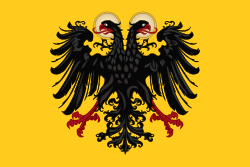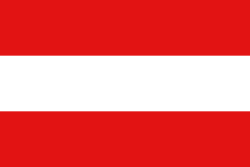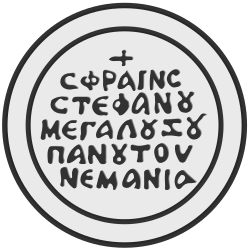1111
| 2. tisíciletí |
◄◄ ◄ 1107 • 1108 • 1109 • 1110 • 1111 • 1112 • 1113 • 1114 • 1115 ► ►►
Události
- Balduin VII. Flanderský se stal flanderským hrabětem
- Založena čínská Akademie Tung-lin za vlády dynastie Sung
- Jindřich V. Sálský korunován císařem Svaté říše římské
Úmrtí
- 3. března – Bohemund z Tarentu, italo-normanský válečník a dobrodruh, kníže z Tarentu a jeden z předních účastníků první křížové výpravy (* mezi 1052–1058)
- 2. dubna – Eufemie Uherská, uherská princezna, manželka olomouckého údělníka Oty Olomouckého (* 1045 až 1050)
- 17. dubna – Robert z Molesme, světec a opat, spoluzakladatel cisterciáckého řádu ve Francii (* cca 1028)
- 5. října – Robert II. Flanderský, hrabě flanderský (1093–1111) a jeden z vůdců první křížové výpravy (* asi 1065)
- 19. prosince – Al-Ghazzálí, perský a islámský filozof, jenž byl islámskou obdobou sv. Tomáše Akvinského nebo Ču-Siho (* 1058)
Hlavy států
Evropa
Území dnešní ČR a Střední Evropa
 České knížectví – Vladislav I.
České knížectví – Vladislav I. Polské knížectví – Boleslav III. Křivoústý
Polské knížectví – Boleslav III. Křivoústý Uherské království – Koloman
Uherské království – Koloman Morava
Morava
Západní Evropa
 Anglické království – Jindřich I. Anglický
Anglické království – Jindřich I. Anglický Dánské království – Niels Dánský
Dánské království – Niels Dánský Francouzské království – Ludvík VI. Francouzský
Francouzské království – Ludvík VI. Francouzský Dolní Lotrinsko – Gottfried VI. Lovaňský
Dolní Lotrinsko – Gottfried VI. Lovaňský Horní Lotrinsko – Dětrich II.
Horní Lotrinsko – Dětrich II.- Brabantské lankrabství – Geoffroy I. z Lovaně
Balkán
 Srbská velká župa – Vukan
Srbská velká župa – Vukan Chorvatské království – Koloman Uherský
Chorvatské království – Koloman Uherský- Knížectví Zeta – Vladimir z Duklji
- Volžské Bulharsko – Vladimir z Duklji
Jižní Evropa
 Svatá říše římská – Jindřich V. Sálský
Svatá říše římská – Jindřich V. Sálský Papežský stát – papež Paschalis II.
Papežský stát – papež Paschalis II. Italské království – Jindřich V. Sálský
Italské království – Jindřich V. Sálský Kastilská koruna – Urraca Kastilská
Kastilská koruna – Urraca Kastilská Království León – Urraca Kastilská
Království León – Urraca Kastilská
Severní Evropa
 Švédské království – Filip Švédský a Inge II. Švédský (spoluvláda)
Švédské království – Filip Švédský a Inge II. Švédský (spoluvláda) Norské království – Øystein Magnusson
Norské království – Øystein Magnusson- Kyjevská Rus – Svjatopolk II. Izjaslavič
Blízký Východ a Severní Afrika
 Byzantská říše – Alexios I. Komnenos
Byzantská říše – Alexios I. Komnenos Jeruzalémské království – Balduin I. Jeruzalémský
Jeruzalémské království – Balduin I. Jeruzalémský- Almorávidé – Ali ibn Yusuf (ovládající západ Maroka, Kanárské ostrovy a Andalusii)
- Fátimovský chalífát – Al-Amir bi-Ahkam Allah
- Rúmský sultanát – Malik Šáh
Dálný Východ a Asie
- Seldžucká říše – Muhammed I.
Externí odkazy
 Obrázky, zvuky či videa k tématu 1111 na Wikimedia Commons
Obrázky, zvuky či videa k tématu 1111 na Wikimedia Commons
Média použitá na této stránce
Banner of the Holy Roman Emperor with haloes (1430-1806).svg
Autor: David Liuzzo, eagle by N3MO, Licence: CC BY-SA 3.0
Banner of the Holy Roman Empire, double headed eagle with halos (1400-1806)
Autor: David Liuzzo, eagle by N3MO, Licence: CC BY-SA 3.0
Banner of the Holy Roman Empire, double headed eagle with halos (1400-1806)
Vatican flag before1808.svg
Vatican flag before1808
Vatican flag before1808
Flag Italian irredentist Dalmatia (Alternate).svg
Autor: R-41, Licence: CC0
Flag of italian Dalmatia
Autor: R-41, Licence: CC0
Flag of italian Dalmatia
Royal Standard of the King of France.svg
Autor: Sodacan, Licence: CC BY-SA 3.0
Královská standarda francouzského krále (používaný jako státní vlajka Francouzským královstvím v období absolutní monarchie). Používaná byla v letech 1638 až 1790.
Autor: Sodacan, Licence: CC BY-SA 3.0
Královská standarda francouzského krále (používaný jako státní vlajka Francouzským královstvím v období absolutní monarchie). Používaná byla v letech 1638 až 1790.
Flag of Hungary (1915-1918, 1919-1946).svg
Flag of Hungary from 6 November 1915 to 29 November 1918 and from August 1919 until mid/late 1946.
Flag of Hungary from 6 November 1915 to 29 November 1918 and from August 1919 until mid/late 1946.
Vexillum Regni Hierosolymae.svg
Autor: Ec.Domnowall, Licence: CC BY 3.0
Drapeau du Royaume de Jérusalem
Autor: Ec.Domnowall, Licence: CC BY 3.0
Drapeau du Royaume de Jérusalem
Banner of arms of Moravia.svg
Prapor s moderní verzí historického znaku Moravy.
Prapor s moderní verzí historického znaku Moravy.
Flag of Sweden (1562–1650).svg
Swallow-tailed flag used between the reign of Gustav I of Sweden until c. 1650, when it was succeeded by a triple-tailed flag.
Swallow-tailed flag used between the reign of Gustav I of Sweden until c. 1650, when it was succeeded by a triple-tailed flag.
Seal of Stefan Nemanja.svg
Autor: Samhanin, Licence: CC0
Seal of the Serb ruler Stefan Nemanja (1166–1199). It reads in Greek: "Seal of Stephen, the Great Zupan, Nemanja"
Autor: Samhanin, Licence: CC0
Seal of the Serb ruler Stefan Nemanja (1166–1199). It reads in Greek: "Seal of Stephen, the Great Zupan, Nemanja"
Royal Banner of the Crown of Castille (15th Century Style).svg
Autor: Heralder, Licence: CC BY-SA 3.0
Royal Standard of the Crown of Castile (15th Century Style)
Autor: Heralder, Licence: CC BY-SA 3.0
Royal Standard of the Crown of Castile (15th Century Style)
Byzantine labarum according to coins.png
Autor: Dragovit, Licence: CC BY-SA 4.0
Byzantine labarum of Constantine VIII, Romanos III, Michael IV., Zoe, Theodora, Constantine X, Michael VII, Nikephoros III, Alexios I etc according to various coins from Constantinople. On the coins of the following Byzantine emperors, the labarum was replaced by the Patriarchal cross.
Autor: Dragovit, Licence: CC BY-SA 4.0
Byzantine labarum of Constantine VIII, Romanos III, Michael IV., Zoe, Theodora, Constantine X, Michael VII, Nikephoros III, Alexios I etc according to various coins from Constantinople. On the coins of the following Byzantine emperors, the labarum was replaced by the Patriarchal cross.
Banner of Přemyslid family.svg
Autor: Samhanin, Licence: CC BY-SA 3.0
Heraldická korouhev se znakem Přemyslovců, též korouhev svatého Václava a Českého knížectví.
Autor: Samhanin, Licence: CC BY-SA 3.0
Heraldická korouhev se znakem Přemyslovců, též korouhev svatého Václava a Českého knížectví.
State Banner of Denmark (14th Century).svg
State Banner of Denmark or the Dannebrog, drawn from the Wapenboek Gelre.
State Banner of Denmark or the Dannebrog, drawn from the Wapenboek Gelre.


















